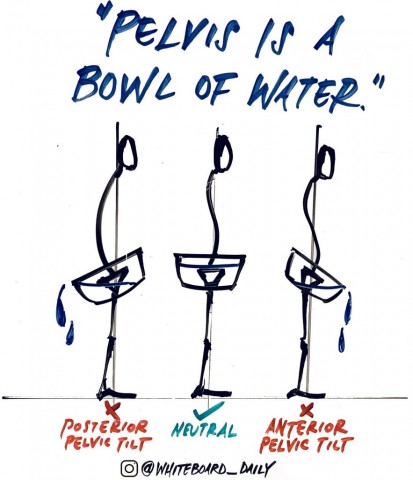There's no denying the importance of the hips in sports performance. The high degree of mobility at this joint allows us to sprint, cut, change direction, raise or lower our center of mass and jump with as much force as we can produce. But before we get started on increasing the mobility or sttrength of our hips we should make sure the hips and pelvis are optimally positioned for our posture. Sometimes the analogy of a bowl of water is used to convey the concept of the positioning of the pelvis. When we have anterior pelvic tilt we can imagine water spilling out of the front of the bowl. The opposite is true of posterior pelvic tilt. I'm not suggesting we should all have a neutral pelvis but instead we should be aware of our posture and how this can impact our movement. A 2014 study (reference below) looked at how our hip mobiliy is influenced by anterior, neutral or posterior pelvic tilt. The researchers examined the hips of 48 subjects that had surgery due to femoral acetabular impingement (FAI). The various positions of anterior pelvic tilt (10 degrees), native (no tilt) and posterior pelvic tilt (10 degrees) were analyzed in terms of hip flexion, hip internal rotation, hip adduction and the position of osseus (bony) contact (impingement). What they found was that anterior pelvic tilt was associated with lower hip flexion (6 degrees), lower internal rotation (15 degrees), lower hip adduction (8.5 degrees) and increased contact at positions of impingement. When the subjects were positioned in posterior pelvic tilt these three ranges at the hip increased and there was decreased inpingement. So for the following athletes this would be a concern for : The sprinter because speed = stride rate x stride length. Less hip flexion may result in a...
